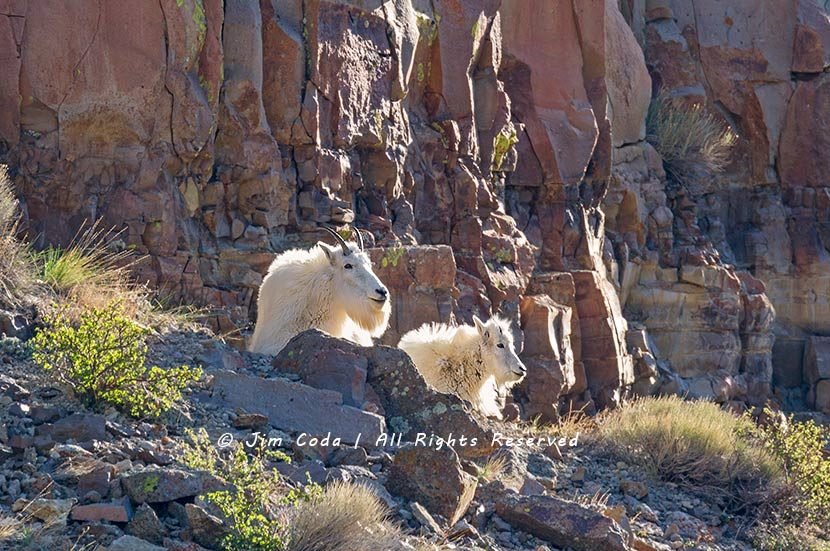Mountain Goats, Yellowstone

A nanny goat and her kid rest in the Hoodoos Area of Yellowstone.
It’s not easy to see mountain goats in Yellowstone. There is a viewing location in the northeast part of the park on the road to Cooke City. Look for the sign that says Barronette Peak. But the goats are quite a distance away for viewing, even if you have a spotting scope. Occasionally they show up in the Golden Gate Area which is the Gardner River Canyon you drive through before topping out at Swan Lake Flat. The area is also called the Hoodoo Area. Both names refer to the color of the rocks. I saw these mountain goats in the canyon early one morning. I posted an earlier article about a billy goat in the same area.
The Park Service says mountain goats are not native to Yellowstone, but the result of the introduction of mountain goats for hunting by the State of Montana in the 1940s and 1950s. Apparently, they were released not that far from the northern portion of Yellowstone and they became established in the northern portions of the park in the 1990s. The Park Service also says they may be having a negative effect on bighorn sheep by competing for food. The Park Service is doing research now with other agencies on mountain goat ecology and to determine the effect of the goats on bighorn sheep. Here’s a video about the harm caused by Yellowstone mountain goats.
The Park Service uses the time period of when European man arrived in North America as a goal, time-wise, for protecting, preserving and restoring our national parks. The Park Service is saying the goats weren’t there then. I don’t have any problem with the Park Service’s idea of striving for conditions like those that existed when European man arrived in this country. In fact, I totally support that policy. But the goats are native to parts of the western United States. What if the goats were in the Yellowstone area 10,000 or 100,000 years ago? Would the policy still say they aren’t native? I don’t know, but I would support treating the goats as native in that case.




